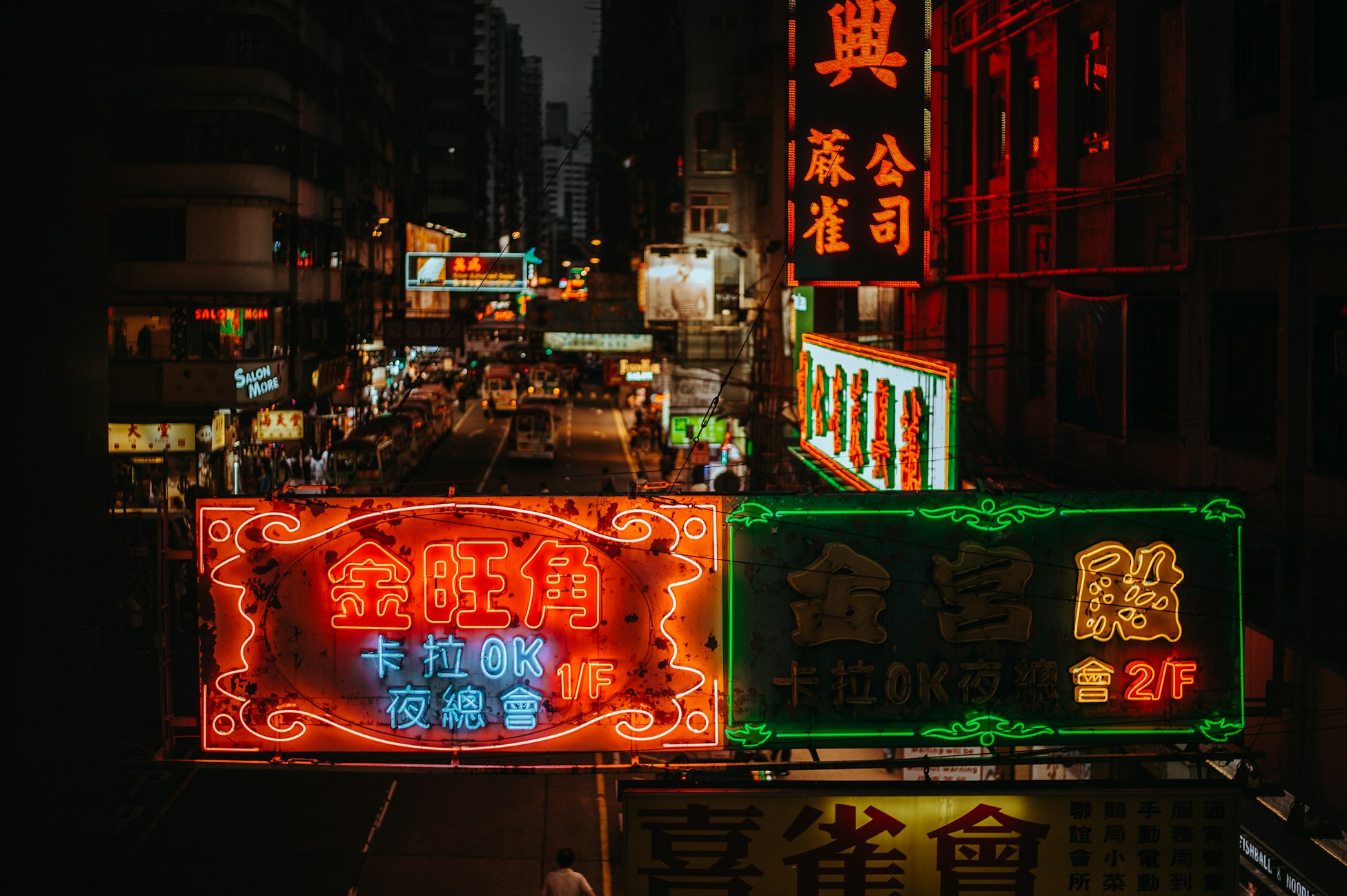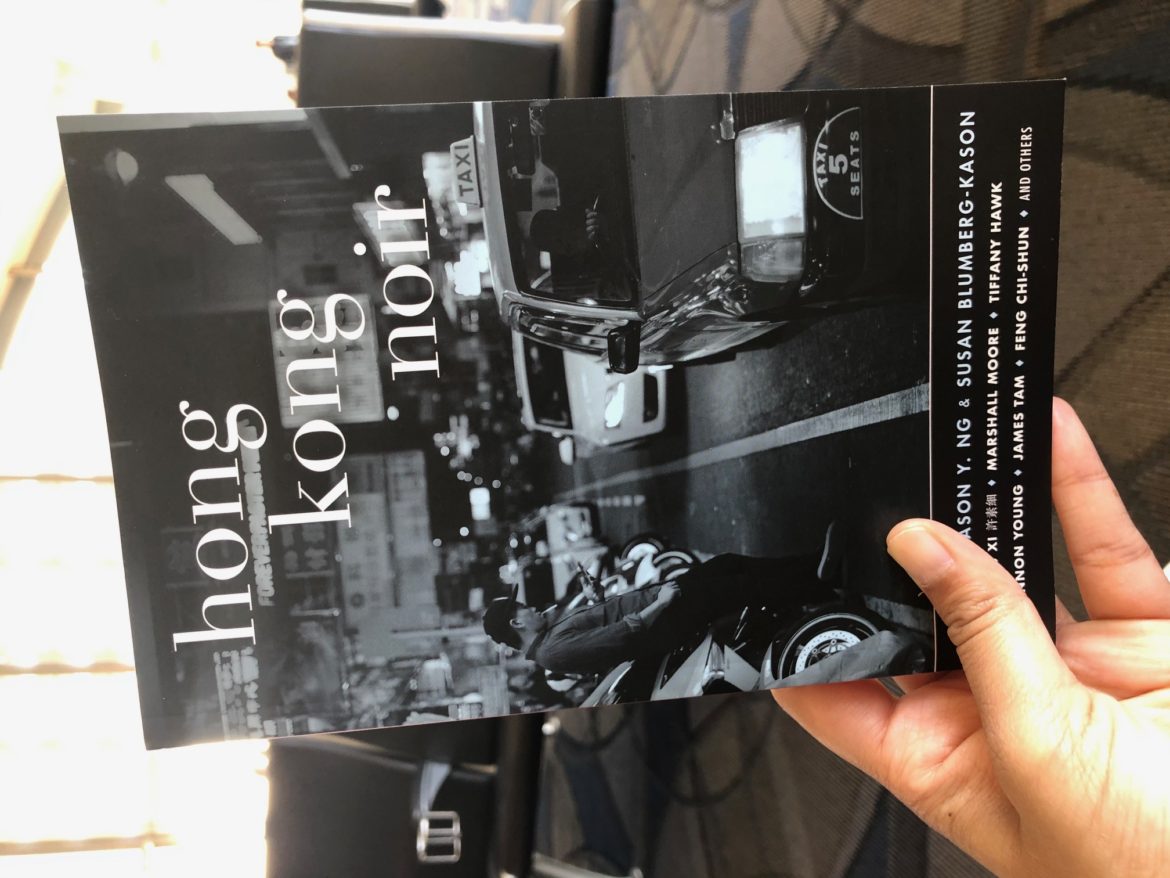This July, I fell in love with Hong Kong. It was quick and unexpected and on short three- day stopover trip en route to Los Angeles. With temperatures in the 90s and typhoon season humidity, those few days are a sweaty blur in my mind. But I remember the feeling of being in a giant mass of humanity, of a place of some importance.
As I boarded my flight back home, I carried specific images back, a catalog of Instagrammable Hong Kong, if you will. The neon lights, the red taxis, the endless skyscrapers, the crowded and bright street markets. I was also left with the feeling that my touristy highlights were woefully inadequate to understand the spirit of the city with a complex history and an uncertain future. Hong Kong protests were in full swing by the time we left.
So, when I came across this beautiful B&W cover of Hong Kong Noir that promised stories from different neighborhoods of Hong Kong, I knew that I had to pick it up.

Photo Credit @anniespratt on Unsplash.com
About The Collection
As the title suggests, the fourteen stories that make up the anthology look at the underbelly of Hong Kong — what lies behind the shimmering skyscrapers and the neon lights. It’s the stories of the many faces of Hong Kong, both dead and living.
The stories focus on the locals who watch with trepidation the modernization that runs over years of reverent history, the expats whose status is increasingly uncertain with the handover to Beijing and the mainland Chinese fortune hunters who come to Hong Kong for the promise of a better life. Through the stories, we get a lesson in the history of Hong Kong, it’s politics, and it’s culture.
The Stories
TST is a plea from beyond the grave by a young prostitute. She talks about how she got into the profession, her life in the Seven Sisters Club, and the changing faces of the red light district of Tsim Sha Sui. She asks us, the living, to listen to her story and those of other ghosts like her. If we listen to their stories, then maybe we can save them.
The Quintessence of Dust by Michael Moore is inspired by the spate of suicides that plagued Cheung Chau during the late 90s and early 2000s. Charles returns to Hong Kong after living abroad and rambles around the dark and haunted corners of Cheung Chau, an island where vacationers would come to die. The preferred method was suicide by carbon monoxide poisoning by burning charcoal in a closed room. Charles, too, has come to Cheung Chau to escape his past and find a purpose. Will he follow in the footsteps of the many others and end his life, or will he find another path?
Both these stories are found under Hungry Ghosts and Troubled Spirits, a section that focuses on the deep superstitions that run through the veins of Hong Kong.
Under Obedience & Respect, there are several tales of rebellion. In One Marriage, Two People by Rhiannon Tsang, a marriage between a British expat and a Chinese man unravels over the notions of identity, duty, and geography on the day of the British handover of Hong Kong to Beijing. Elsewhere in Phoenix Moon, a sex worker exacts her revenge on her lover in a brutal yet comical way.
In Family Matters, we visit the rich swanky Repulse Bay, the slums of Diamond Hill, and the hustle-bustle of Yau Ma Teu. A View to Die For focuses on the inner lives of the wealthy residents of Repulse bay. Expensive Tissue Paper and Ticket Home bring two very different perspectives of poor mainland Chinese folks trying to build a life in Hong Kong. In one story, a young man trying to make his fortune fumbles through a bank robbery and fails. In the later, a young girl soon learns that sex pays, and she becomes both the victim and the oppressor.
The closing act of the anthology, Death, and Thereafter has four wonderfully bloody stories that are made more interesting by their ambiguous endings. Blood on the Steps is a story about a journalist who is driven by click-bait news culture and makes morally questionable choices for success and pays the price. In Kam Tin Red, a son searches for the truth and finds dark secrets in his family closet from the time of the Leftist revolution of 1967. Fourteen takes us to the public housing estate of Wah Fu, where we glimpse life inside the tiny apartments provided by the government to the erstwhile shanty dwelling poor.
Verdict
Overall the anthology is fairly riveting with some stories definitely stronger than the others. What drew me to the book was the diversity of contributors. From locals to expats, freelance writers, and university professors, the writing has enough breadth of experience to put together an entertaining, engaging, and informative collection.
One doesn’t need to visit Hong Kong to enjoy this book, but to read while traveling through the city will add a lot to the experience. Add it to your backpack.
For more book reviews, go here






